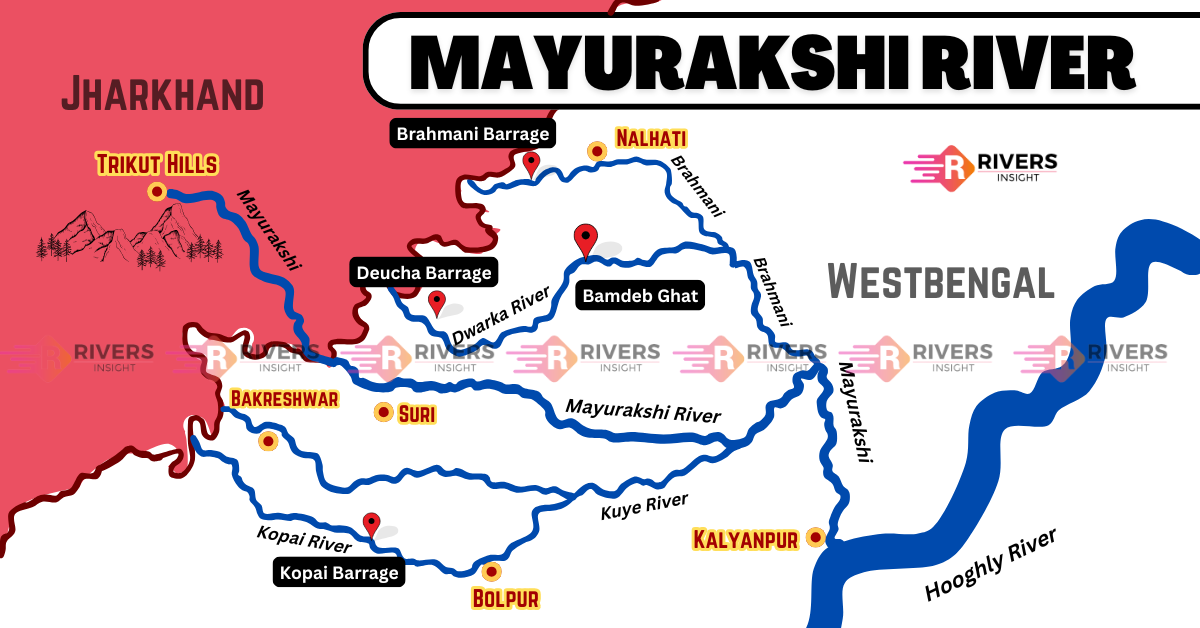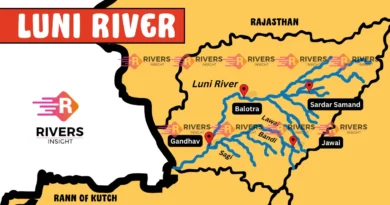Mayurakshi River: Map & Origin with Map
Mayurakshi River is a tributary of the Hooghly River, stretching 250 kilometers through the states of Jharkhand and West Bengal. It originates from the Trikut Hills near Deoghar in Jharkhand. Moreover, the name “Mayurakshi,” meaning “peacock-eyed” in Sanskrit, reflects its natural beauty and vitality.
Table of Contents
Origin and Course
Mayurakshi River originates from the Trikut Hills, located about 16 kilometers from Deoghar in the state of Jharkhand. From its source, the river begins its journey through the Deoghar and Dumka districts, gradually making its way toward West Bengal.
Upon entering West Bengal near the Jharkhand-West Bengal border, the river flows through the districts of Birbhum and Murshidabad. It follows a west-to-east trajectory with a slight southern inclination. Along its course, the river passes through important towns such as:
- Suri
- Sainthia
- Murshidabad
Finally, the Mayurakshi River merges with the Hooghly River, a major distributary of the Ganges.
Map of Mayurakshi

Tributaries
The main tributaries of the Mayurakshi River are:
- Brahmani River (left tributary)
- Bakreshwar
- Kopai River
- Dwaraka River
- Kushkarni River
Dams
The prominent dams include:
- Massanjore Dam (Kanara Dam): Located on the Dumka-Suri road in Dumka district, Jharkhand, this dam plays a vital role in irrigation and hydroelectric power generation, with a capacity to generate 4 megawatts of electricity.
- Tilpara Barrage: Situated near Suri in Birbhum district, West Bengal, this barrage helps regulate the river’s flow, ensuring irrigation for the surrounding agricultural lands.




